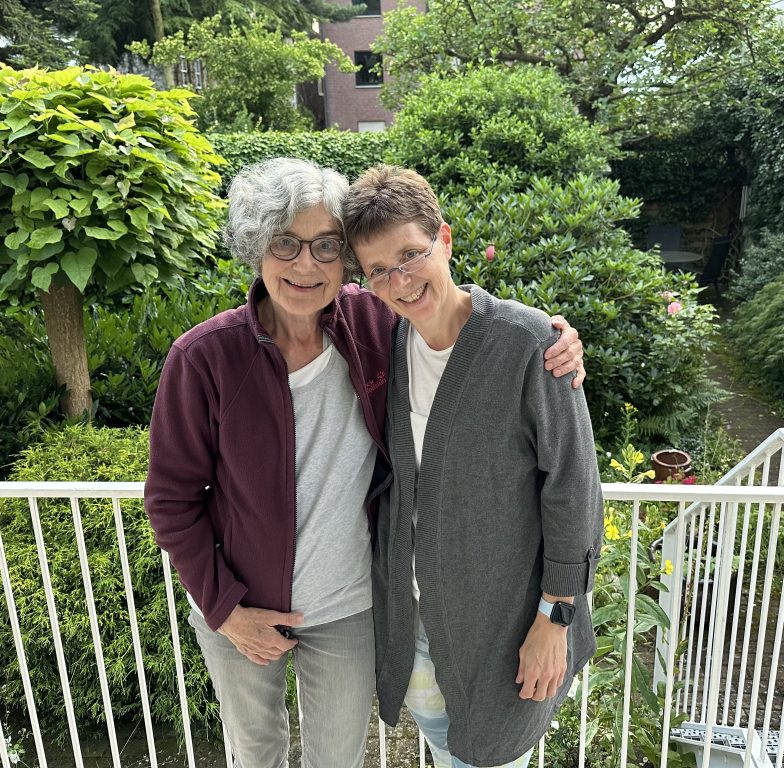At the end of the transatlantic flight in a 100% packed airplane, we arrived an hour early (but without being fed an airplane breakfast because of turbulence!) at the airport in Amsterdam, and were able to take an earlier train, which got us to my mom’s hometown of Osnabrück just after 1 pm. We had been pretty wary of overcrowded and possibly chaotic trains, because summer rail travel has not been smooth this summer, with the European soccer cup being held in Germany and attracting many fans who travel by train from all over Europe, but we had a very pleasant surprise: even though our train from Hilversum in Holland to Osnabrück was quite full (probably about 95% seating capacity), we not only found seats for all but the last 20 minutes, when we had to yield one seat to the young woman who had reserved it starting right after the Dutch border. In addition, our fellow passengers on the train, who were almost all young Spaniards in their late teens, clearly traveling without chaperones, were extremely well-behaved, quiet, and calm. I have traveled with adolescents of all stripes and nationalities on German trains, and I don’t think I’ve ever seen any who were quite as nice–in spite of the fact that I assume that they were traveling to Stuttgart, where the quarter finals that pitch Germany against Spain for the Euro (UEFA) Cup are being held on Friday. I am not sure whether someone told them that the German train personnel would come arrest them or yell at them, but there were just no infractions at all; neither was there any alcohol. I was very pleasantly surprised.
After we arrived at the Osnabrück train station, we took the bus to my mom’s and were welcomed with coffee (and tea for Mark) and German cheesecake (and my mother’s open arms). It was so nice to have landed in my mom’s lovely apartment and immediately feel at home! Her little walled garden has become even more beautiful and greener, if that is possible.

Then we took a little bit of a nap (with an alarm clock set at 30 minutes so we wouldn’t crash and sleep for hours), and went for a short walk to the downtown area of Osnabrück and back home, through lots of familiar streets. It was overcast and occasionally a little drizzly, but we just needed to stretch our legs and complete our usual landing procedure! We chatted for a while, checked in with family back home, and my mom (Imke) made us a lovely tomato soup for dinner, which we all had with German bread and cheese. We tried to stay upright as long as we could (easier because it was still so light out at 10 pm this far north), and then crashed and slept all night. It was so nice!